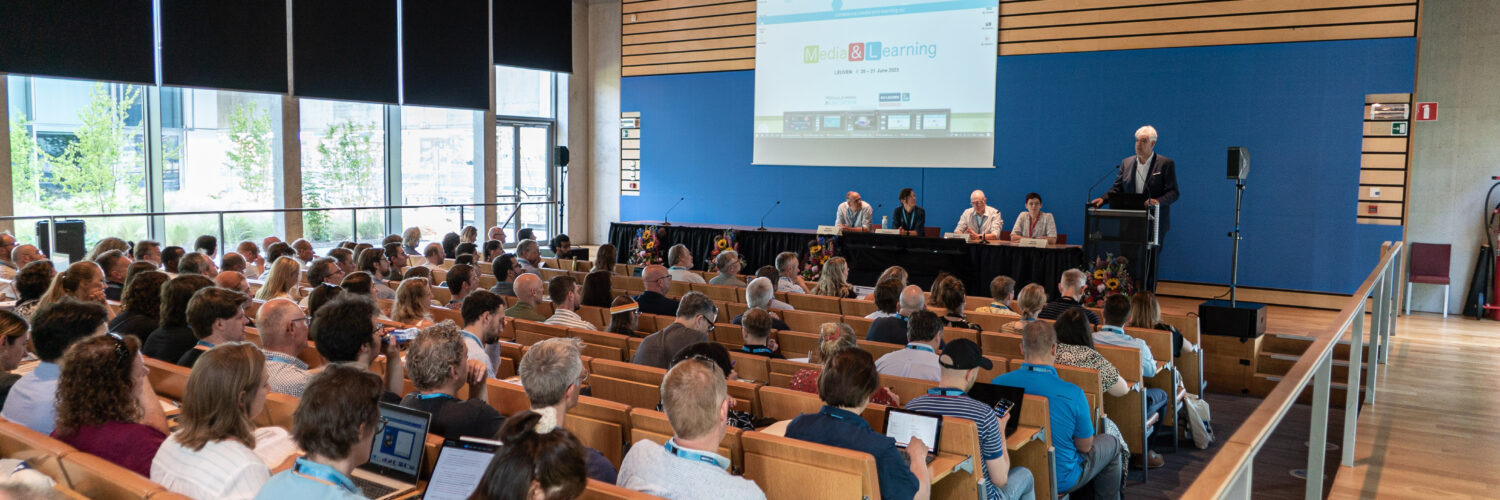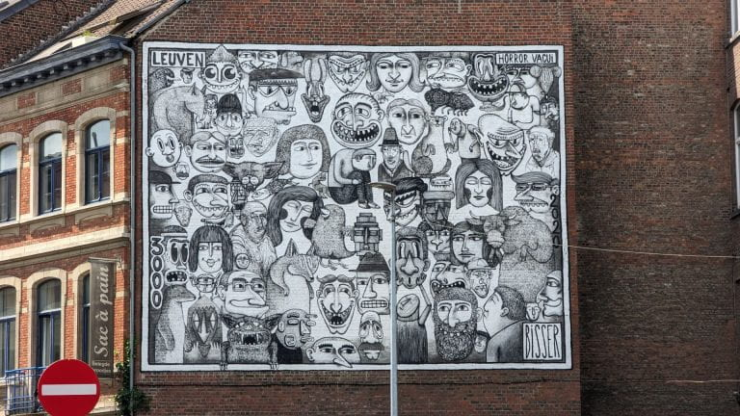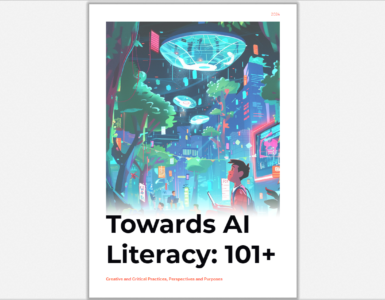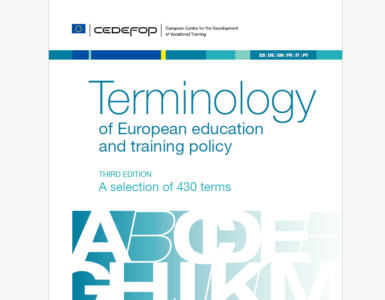by Steven McCombe, City, University of London, UK.

Every summer, the Media & Learning Association holds an annual gathering to showcase and discuss the use of media in education. The 10th anniversary conference was hosted in the beautiful city of Leuven near Brussels. I had the privilege of attending and presenting this year, together with my colleague Dominic Pates. The two-day event was packed with lectures, discussions and demonstrations and allowed a friendly space for media experts and educators from around the world to meet and learn from each other. Extended Reality (XR) and Artificial Intelligent (Ai) were big topics for debate this year. There was also ample opportunity to drink a cool glass of Belgium beer during the awards ceremony! This year’s theme addressed one of the most challenging tasks that educators face, namely, how to incorporate media in all its manifestations into the learning process in the most efficient and effective way possible.
Being so jam-packed and, because of parallel sessions, it was impossible to attend everything. What follows are a small selection of events which I found stimulating and enjoyed very much.
Keynote Talks

The keynotes covered a wide range of topics, from examining XR’s role in Higher Education to harnessing learning analytics for enhancing knowledge retention. Carl Boel from Universiteit Gent delivered a presentation on the findings of his research regarding the potential of immersive technologies in developing soft skills, particularly in scenarios where traditional training is either infeasible or unsafe. The study’s results indicated that both students and instructors believe these technologies have a valuable role, provided they are user-friendly, effective, and enjoyable. However, it was highlighted that they require the appropriate knowledge and resources for successful implementation. Questions raised by the audience included concerns about industry players like META funding such research.
Exhibitors Floor
Present during the entire conference were a selection of companies with their media solutions, including Kaltura, Sony, Panopto and Rapidmooc. Happy to demonstrate and with answers to questions, I spent a lot of time talking to the manufacturers and seeing what their systems could do.
At City University, we use Kaltura MediaSpace and the experts from Kaltura were very friendly and approachable, answering some of the very technical questions I had. Sony demonstrated an innovative whiteboard video system, allowing the writing to the board to show through the presenter, so the material was always visible to students. They also had a range of very powerful and affordable ceiling microphones on show.

Several companies had their own take on a DIY video production system, offering different approaches to DIY video. Get-Your-Studio was a portable TV studio solution and allowed many video options, including allowing a user to present with the contents of their mobile phone appearing next to them on screen.

Advances in Audio-Visual Production Process in Education
The subject of my and Dom’s presentation were the two DIY video systems we have at City – one a commercial product (Rapidmooc) situated in the School of Science and Technology, and one a bespoke, home-made system (Presentation Station) situated in the MILL for all staff use. We talked about their inception and use within the University and what we thought worked well and where there was room for improvement. The session was followed by a thorough question and answer session. This being my first conference talk, I inevitably had some nerves, but the presentation went well, and the podium technology worked flawlessly.


Our intro video raised a smile amongst the audience as we introduced the systems.
On the same panel was an interesting presentation from Heriot-Watt University. Their educational videos utilised a charismatic academic presenter, based in Dubai. Bringing in classic compositions from timeless movies, such as Lawrence of Arabia, gave a very polished, enigmatic and engaging look to their teaching videos. The feedback from their students was very complimentary. A mandatory blooper reel brought a lot of amusement to the audience, with several long introductory walks to camera in the Dubai dessert ruined by an annoying propellor plane flying overhead.
MEDEA Award Finalists

This event showcases the best pieces of educational multimedia from around the world. These varied from interactive games, websites rich in video, to documentaries. For me, some of the highlights included:-
Stolpersteine NRW: This project developed from the Gunter Demnig’s Stolpersteine project, where small brass memorial plaques were placed around Europeans streets, each commemorating a victim of the Nazi regime. There are currently 90,000 Stolpersteine in 27 countries. The digital resource provides a map of all the plaques in an entire German state, each with a photo of the plaque, the person commemorated and relevant history. Made by Westdeutscher Rundfunk, Germany.
Superfake Safari: Using a range of fun animal characters and a combination of app and board game, young people are shown the issues and dangers of online disinformation, and how to spot it. Clickbait, fake news, deepfake technology and social media are all covered. Made by Media Jungle, Netherlands.
Effective Communication for Leadership: An easy to navigate, media-rich website covering all aspects of good communication. Made by IE University, Spain.
Superfake Safari was awarded the winners prize.


AI Panel Discussion
Led by Carlos Turro Ribalta from Universidad Politécnica de Valencia, Dom and I joined two other media experts to talk about the developments in Generative Ai and how we’ve been using them in our media work. City has been using Ai quite extensively, from cleaning and enhancing poor audio using Adobe Podcast, to sharpening cropped video footage. The generative Ai fill within Adobe Photoshop has allowed the effective removal of distracting background objects, such as cameras or drinking bottles, to the extending of rooms and ceilings. One of the most exciting uses of Ai was the cloning of an academic’s voice (with her permission) so amended dialogue could be artificially generated for a film. The final result was indistinguishable from her own voice. The amended dialogue was also tonally improved using Adobe Podcast.
One experience created a particular stir in the room: some quiet background creaks in a recording had, disturbingly, been turned into odd language chatter by Adobe Podcast. Ai words from nothing! Maybe Podcast was trying to tell us something.
The session created some lively debate about the use of Ai and it was clear most universities in Europe had only began to explore its use and power. We were shown some rather disconcerting examples of Ai generated avatars used for a fully Ai presented course. They are currently very robotic and without emotion, but advances are being made and maybe soon we will see an avatar which laughs at its own Ai generated jokes! The Ai features of Adobe Premiere were demonstrated by Markus Tischner from FAU in Germany and we currently seeing video editors capable of editing a film together themselves. This is one topic which only going to grow in years ahead and I look forward to how developments in Ai will affect media production in general.


XR in Higher Education
This presentation showcased several uses of XR, particularly for simulation in health education. One system allowed health students to experience what it like to be autistic, with intense colours and audio over-stimulation. Another system allowed those students learning to do resuscitation on a dummy to see a real person in their VR visor, who reacted with every press of the dummies chest for a truer experience.
Leuven City
We didn’t have a lot of time to explore this beautiful city, but with stunning architecture, bicycle paths, odd-ball sculpture and of course some of the best chocolate shops in Europe, it is worth a visit.
My Final Thoughts
The two-day conference was deep-filled with interesting events and showcases and I had the opportunity to meet like-minded people from many different countries, build relationships and to talk about areas which are affecting our work and everyday lives, like Ai. We are all trying our best to improve the world of education using multimedia and, as we discovered, it’s a very exciting time in history for developments.
Since the conference, I’ve been asked to join the Media & Learning Committee so I should have some input on next year’s conference.

Author
Steven McCombe, City, University of London, UK



















